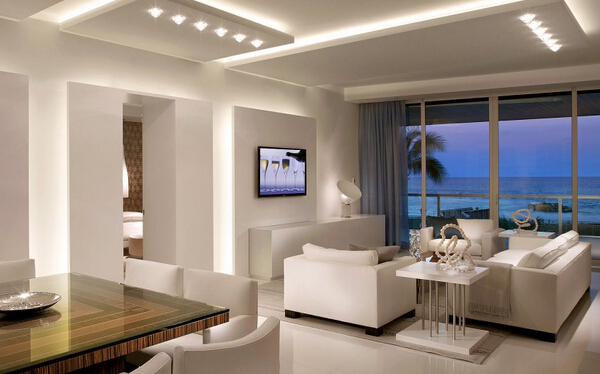Seeing Ourselves in New Light
“Love of beauty is taste. The creation of beauty is art.” - Ralph Waldo Emerson
Beauty
What defines beauty? What makes you feel beautiful?
Seeing ourselves as beautiful is an intimate process where we evaluate what we see based on variables that we’ve personally defined. This may include physical variables such as makeup, skin tone, or even our choice in clothing.
So what does this have to do with lighting?
Yikes!
Imagine you are in front of a bathroom mirror getting ready for work in the morning. You fix your hair, apply your makeup and are ready to leave the house. You get into your car and casually take a look in the rearview mirror only to be horrified by what you see: cheeks that are too red, eye shadow that is too dark, a streak of foundation running along your cheek, and lipstick that hasn’t been applied evenly.
If we do not look at ourselves within the correct light spectrum, we run the risk of looking unnatural and distorted. However, we often don’t know we’re in the wrong spectrum until we move to a different light. In this case, you strutted out of your bathroom ready to start your day with conviction only to get a shock of what you really looked like once you were outside in the sunlight.
Light is always changing so we would need to check ourselves under different light sources to account for every possibility that we might encounter on any given day. If you cannot fit multiple light sources in your home to mimic all the environments you are in each day – home, work, restaurants, gym, outdoors – you can use LED lighting with a high CRI and high GAI to mimic sunlight and give you the best, and most natural, lighting solution. Not only will you be able to see if your makeup has been applied consistently, but you can determine if you chose the right shades that compliment your skin tone.
Under different lights, the same lipstick appears to have different undertones. The image on the left appears with an orange undertone at 3000K 80CRI, while the image on the right appears with a blue undertone at 3000K Class A, which is perceived as being more natural and closer to the actual shade.
What Is That?
We know LED lighting can help us look our best. But for some, part of looking our best can also mean considering how confident we feel about our appearance, and LED lighting may help here too.
By now you’ve probably seen the LED face masks that many celebrities are wearing to help with skin glow, acne or anti-aging effects. They look a bit like the fright-inducing Jason masks that pop up during Halloween.
While we’ve researched some studies indicating that light therapy has potential benefits in treating acne and in facial skin rejuvenation, more studies are still needed to understand the full effects of LED lighting on a beauty regimen.
For more information about how LED lighting helps with Circardian rhythm and other health issues, check out one of our most popular blogs from 2015. And tell us, have you ever used one of these masks? What has been your experience?
She Lights Up The Room, Literally
What people define as aesthetically pleasing can include other physical attributes such as how their clothing looks on them.
We've seen an increase in clothing embedded with LEDs, some of it high fashion, some of it smart, and some of it just plain cool.
Tell us, have you worn any LED clothing? What has been the reaction you've received?
Bridgelux and the Quality of Light
Many of the consumer light therapies or clothing use monochromatic light sources. But at Bridgelux, we offer full visible spectrum lighting that will affect your appearance and skin tone. Our Class A products with high CRI values shine more like natural sunlight and produce an environment with pleasing aesthetics.
We asked one of our employees to model for us under various lighting environments ranging from 3000K80 CRI to the Bridgelux 4000K Class A, as well as our Décor Series™ Food Meat & Deli and Décor Series™ Bread & Bakery lights for kicks. You can see just how different her skin looks under each light option.
Whether you are trying to decide what kind of lighting to put in your home bathroom, or designing a new retail shop, it is essential to keep in mind that lighting affects both the physical environment of the space and the self-perception by people in those spaces as well. For example, if poor lighting in a clothing shop makes a customer’s skin look dull and unhealthy, it can impact whether they buy the clothing.
To learn more about Bridgelux products with high CRI values, contact us anytime or leave your comments below!


